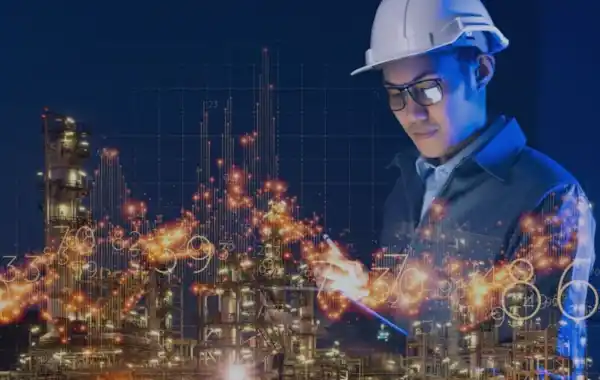03 March 2022
|
By Paul Walsh, general manager – EMEA at CIM.
It goes without saying that, for management teams across the life sciences and hi-tech manufacturing industries, the past 18 months have undoubtedly focussed on damage limitation. Yet, when it comes to defining strategy for the coming months and years, decision makers are now finding themselves at a perceived fork in the road.
On the one hand lies competition: how to remain both productive and profitable; while on the other, sustainability looms large.
The truth is, both are now intrinsically linked. Going forward, each and every product’s ‘cradle to grave’ carbon emissions will increasingly be put under the microscope, with much greater scrutiny placed on the initial production stage.
However, the focus will just not be limited to the energy consumption of production machinery, but all aspects of a site’s energy footprint – from lighting through to HVAC. Put simply, manufacturers will not only have to compete on cost, but also on carbon.
Pre-COVID, sustainability was gradually creeping up the boardroom agenda. Now, it’s at the very top. Indeed, 40 manufacturers in the UK and Ireland have committed to ‘net zero’ carbon neutrality by 2050. Many more are looking to make rapid progress before that in line with legislation such as the UK Government’s Sixth Carbon Budget, which mandates cutting current emissions by three quarters before 2035. In order reach these ambitious targets, all site operations will need to be fully optimised to deliver the demand side reductions required.
Top priority
What is worrying, however, is the apparent disconnect between boardroom ambitions, and the practical realities of meeting such ambitious targets when running energy-intensive, large-scale advanced manufacturing plants.
Recent research commissioned by CIM revealed that the carbon emissions of HVAC systems in hi-tech manufacturing and life science facilities are a top priority for just 21% of senior management, despite accounting for up to up to 40% of a site’s overall energy consumption. Even more surprising was that 81% of those surveyed would class their site as efficient, despite less than a third (31%) admitting to continuously monitoring a facility’s carbon emissions.
There is no easy way to decarbonise industrial processes at this scale, especially when renewable energy sources are often not available in the volumes required to meet operational demand. However, given the UK’s notoriously high industrial electricity £/kWh, which is well above the EU 15 median, failing to address potential inefficiencies in HVAC systems is likely to compound the issue.

Paul Walsh of CIM
One of the main reasons for this potential oversight is the ultra-tight cleanroom controls in place throughout hi-tech and life science manufacturing facilities. Typically, once the temperature, humidity and differential pressures have been validated, alterations are rarely made. Any that are must be undertaken under strict conditions and stringent regulatory environments.
Worryingly, this ‘set and forget’ mentality can easily pervade the management of all areas of a manufacturing facility, including non-validated environments, with infrequent changes or check-ups leading to settings potentially deviating significantly from the intended parameters over time. All of this leads to HVAC costs– and their associated carbon emissions – that are at best unregulated, and at worst, far higher than is required.
In short, the way to balance both cost and sustainability pressures lies in the division and execution of a highly targeted, holistic energy reduction strategy that encompasses all elements of a plant’s consumption. This should not, however, warrant the need for significant CapEx investment.
Rather, the real challenge for manufacturers is to improve the efficiency of existing systems by untangling the sheer volume of data presented to their facilities management teams, and turning it into actionable insights.
‘Alarm fatigue’
Indeed, it is not impossible for a maintenance manager to come into work each day and be faced with dozens of alarms that have sounded overnight, leading to what we call ‘alarm fatigue’. All-too-often we find maintenance teams are on a purely reactive footing, driven by which alarms have gone off between shifts. A better way is for alarms to be prioritised into those that require urgent attention and those that can be dealt with as part of a normal maintenance programme. This is often the first step in developing a more predictive approach to HVAC plant maintenance.
Many systems lack external human resourcing to help with prioritisation, which is why this new generation of platforms is underpinned by human ‘customer success’ teams. These personnel are tasked with identifying top priority fixes and ensuring they are dealt with immediately.
This leaves the validated areas, which facilities managers and maintenance teams cannot adjust once validation has been achieved and parameters have been set. In these scenarios, the role of the building analytics platform must be to determine if validated settings are actually delivering the intended outcomes, and if they are doing so in the most efficient way possible.
Ultimately, for manufacturers, the macro factors of legislation and energy unit price will only serve to highlight the interdependency of sustainability and competition. A better understanding of HVAC operational performance holds the key to not only increasing profitability and productivity, but also reducing both energy consumption and the overall carbon footprint of the site.








